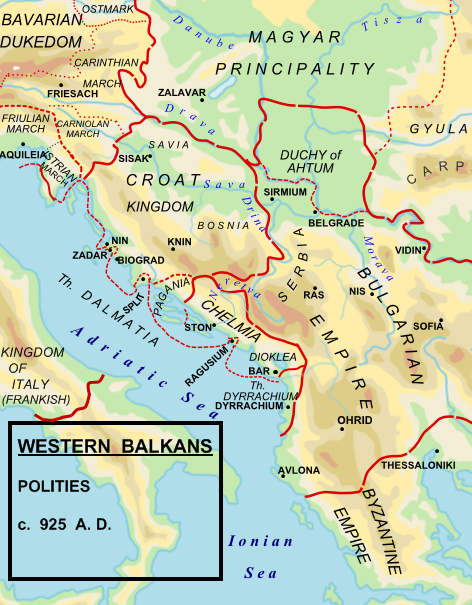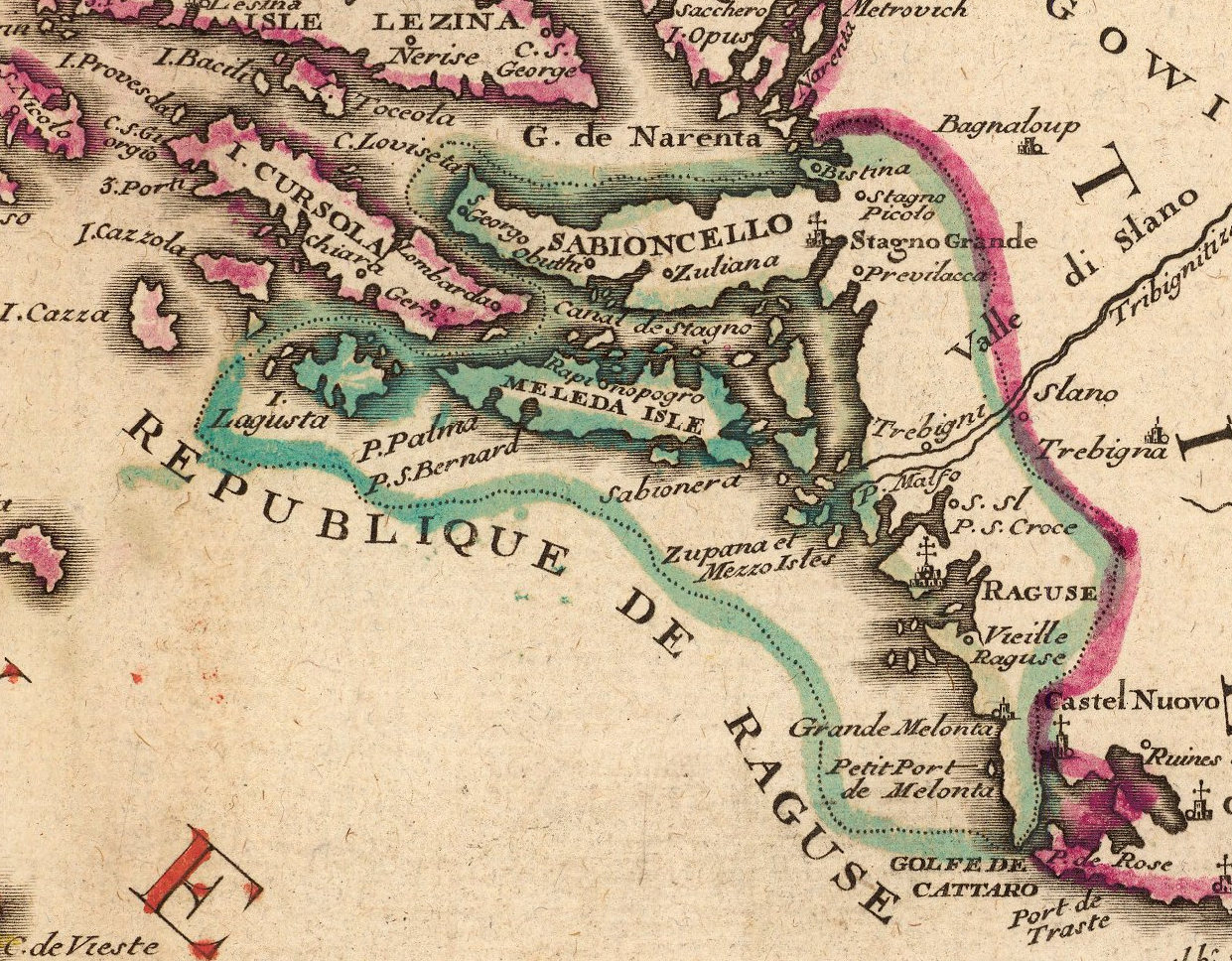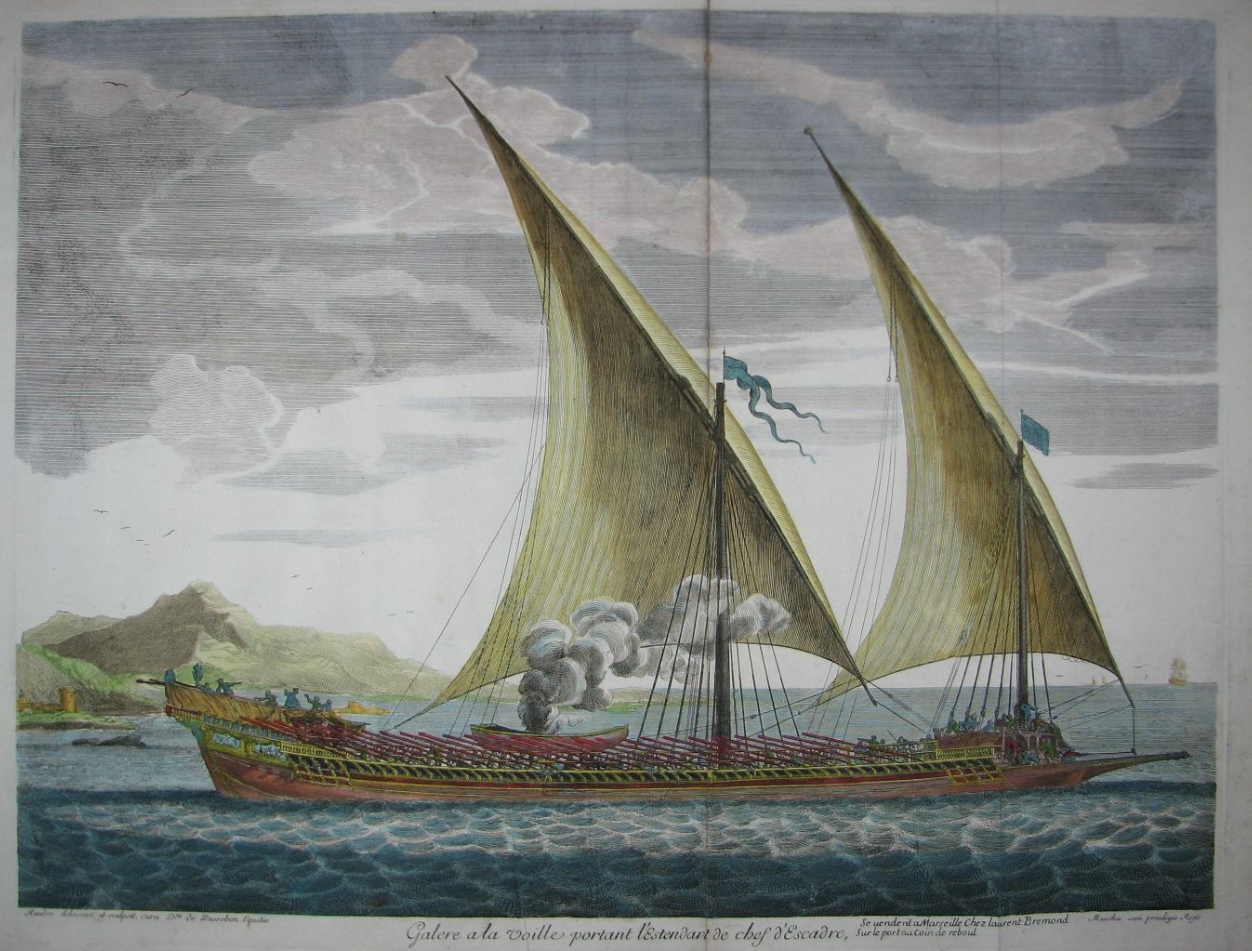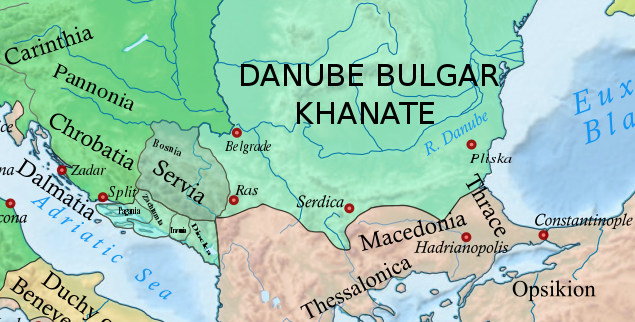|
Venetian Dalmatia
Venetian Dalmatia () refers to the territories of Dalmatia under the rule of the Republic of Venice, mainly from the 15th to the 18th centuries. Dalmatia was first sold to Venice in 1409 but Venetian Dalmatia was not fully consolidated until 1420, though Venice had already controlled a number of Dalmatian cities and islands since the year 1000 AD. It lasted until 1797, when the Republic of Venice fell to the forces of Napoleon Bonaparte and Habsburg Austria. Geography The Republic of Venice had possessions in the Balkans and in the eastern Mediterranean Sea, including Venetian Albania in the Adriatic Sea and the Venetian Ionian Islands in western Greece. Its possessions in Dalmatia stretched from the Istria peninsula to what is today coastal Montenegro: they included all the Dalmatian islands and the mainland territories from the central Velebit mountains to the northern borders of the Republic of Ragusa. With the 1718 Treaty of Passarowitz, Venice enlarged its possessions i ... [...More Info...] [...Related Items...] OR: [Wikipedia] [Google] [Baidu] |
Province
A province is an administrative division within a country or sovereign state, state. The term derives from the ancient Roman , which was the major territorial and administrative unit of the Roman Empire, Roman Empire's territorial possessions outside Roman Italy, Italy. The term ''province'' has since been adopted by many countries. In some countries with no actual provinces, "the provinces" is a metaphorical term meaning "outside the capital city". While some provinces were produced artificially by Colonialism, colonial powers, others were formed around local groups with their own ethnic identities. Many have their own powers independent of central or Federation, federal authority, especially Provinces of Canada, in Canada and Pakistan. In other countries, like Provinces of China, China or Administrative divisions of France, France, provinces are the creation of central government, with very little autonomy. Etymology The English language, English word ''province'' is attested ... [...More Info...] [...Related Items...] OR: [Wikipedia] [Google] [Baidu] |
Republic Of Ragusa
The Republic of Ragusa, or the Republic of Dubrovnik, was an maritime republics, aristocratic maritime republic centered on the city of Dubrovnik (''Ragusa'' in Italian and Latin; ''Raguxa'' in Venetian) in South Dalmatia (today in southernmost Croatia) that carried that name from 1358 until 1808. It reached its commercial peak in the 15th and the 16th centuries, before being conquered by Napoleon's First French Empire, French Empire and formally annexed by the Kingdom of Italy (Napoleonic), Napoleonic Kingdom of Italy in 1808. It had a population of about 30,000 people, of whom 5,000 lived within the city walls. Its motto was "'", a Latin phrase which can be translated as "Liberty is not well sold for all the gold". Names Originally named ' (Latin for "Ragusan municipality" or "community"), in the 14th century it was renamed ' (Latin for ''Ragusan Republic''), first mentioned in 1385. It was nevertheless a Republic under its previous name, although its Rector was appointed b ... [...More Info...] [...Related Items...] OR: [Wikipedia] [Google] [Baidu] |
Bijaći
Bijaći was a medieval Croats, Croatian village, some northeast of Trogir. The village developed around the church of St. Martha on the site of a former 1st century ''villa rustica'' at Stombrate locality, about half way between Tragurium and Salona, in the hinterland of the Roman veterans' coastal settlement of . Renovated in late antiquity, part of the villa became an early Christian church, which evolved between the 5th and 7th centuries. Following the arrival of the Croats, it is believed that the complex of the villa was transformed into the center of a Duchy of Croatia, Croatian ducal estate, which stretched to the coast, incorporating the Divulje area and the church of St. Vital. During this period, the early church was repaired and rededicated to St. Martha; arguably, the church was a court church of the early Croatian dukes. The earliest mentions of Bijaći date back to 852 (Byaci) in the grant of duke Trpimir I, Trpimir, and 892 (Biaci) to the duke Muncimir's document ... [...More Info...] [...Related Items...] OR: [Wikipedia] [Google] [Baidu] |
Klis
Klis is a Croatian village and a municipality located around a mountain fortress bearing the same name. Population In the 2011 census, the municipality of Klis had a total population of 4,801, consisting of the following settlements: * Brštanovo, population 286 * Dugobabe, population 137 * Klis, population 3,001 * Konjsko, population 283 * Korušce, population 80 * Nisko, population 244 * Prugovo, population 555 * Veliki Bročanac, population 159 * Vučevica, population 56 Geography Klis is a suburb of the city of Split located in the region of Dalmatia, just northeast of Solin and Split proper near the eponymous mountain pass. The Klis mountain pass separates the mountains Mosor and Kozjak at an altitude of 360m. It has had major strategic value throughout history because any inland force passing through Klis would have been able to easily reach the entire region of Split and Kaštela. Due to its geographical position, Klis is also susceptible to a rather strong ... [...More Info...] [...Related Items...] OR: [Wikipedia] [Google] [Baidu] |
Dalmatia (theme)
The Theme of Dalmatia (, ''thema Dalmatias/Delmatias'') was a Byzantine theme (a military-civilian province) on the eastern coast of the Adriatic Sea in Southeastern Europe, headquartered at Jadera (later called Zara, today's Zadar). Origins Dalmatia first came under Byzantine control in the 530s, when the generals of Emperor Justinian I (r. 527–565) seized it from the Ostrogoths in the Gothic War. The invasions of the Avars and Slavs in the 7th century destroyed the main cities and overran much of the hinterland, with Byzantine control limited to the islands and certain new coastal cities -with local autonomy and called Dalmatian city-states- such as Spalatum (Split) and Ragusium (Dubrovnik), while Jadera (Zadar) became the local episcopal and administrative center, under an ''archon''.. These coastal cities were the refuge of the autochthonous Dalmatian neolatins, who created the original eight Dalmatian city-states: (Vecla (now Krk), Crespa (now Cres), Arba (now Rab) ... [...More Info...] [...Related Items...] OR: [Wikipedia] [Google] [Baidu] |
Galley
A galley is a type of ship optimised for propulsion by oars. Galleys were historically used for naval warfare, warfare, Maritime transport, trade, and piracy mostly in the seas surrounding Europe. It developed in the Mediterranean world during Classical antiquity, antiquity and continued to exist in various forms until the early 19th century. It typically had a long, slender hull, shallow draft (hull), draft, and often a low freeboard (nautical), freeboard. Most types of galleys also had sails that could be used in favourable winds, but they relied primarily on oars to move independently of winds and currents or in battle. The term "galley" originated from a Greek term for a small type of galley and came in use in English from about 1300. It has occasionally been used for unrelated vessels with similar military functions as galley but which were not Mediterranean in origin, such as medieval Scandinavian longships, 16th-century Ghali (ship), Acehnese ghalis and 18th-century North ... [...More Info...] [...Related Items...] OR: [Wikipedia] [Google] [Baidu] |
Narentines
The Narentines were a South Slavic tribe noted as pirates on the Adriatic Sea in the 9th and 10th centuries. They occupied an area of southern Dalmatia centered at the river Neretva (). Named ''Narentani'' in Venetian sources, they were called ''Paganoi'', "pagans", by the Greeks, as they were still pagan after the Christianization of the neighbouring tribes. They were fierce enemies of the Republic of Venice, attacking Venetian merchants and clergy traveling through the Adriatic, and even raiding close to Venice itself and defeating the doge several times. Venetian–Narentine peace treaties did not last long, as the Narentines quickly returned to piracy. They were finally defeated in a Venetian crackdown at the turn of the 10th century and disappeared from sources by the 11th century. Terminology The word ''Narentine'' is a demonym derived from the local Neretva River (). The terms "Narentines", "Pagania" or "Pagans" are found in two contemporary sources: ''De Administrando I ... [...More Info...] [...Related Items...] OR: [Wikipedia] [Google] [Baidu] |
Slavic Nations
The Slavs or Slavic people are groups of people who speak Slavic languages. Slavs are geographically distributed throughout the northern parts of Eurasia; they predominantly inhabit Central Europe, Eastern Europe, Southeast Europe, Southeastern Europe, and North Asia, Northern Asia, though there is a large Slavic minority scattered across the Baltic states and Central Asia, and a substantial Slavic diaspora in the Americas, Western Europe, and Northern Europe. Early Slavs lived during the Migration Period and the Early Middle Ages (approximately from the 5th to the 10th century AD), and came to control large parts of Central Europe, Central, Eastern Europe, Eastern, and Southeast Europe between the sixth and seventh centuries. Beginning in the 7th century, they were gradually Christianization of the Slavs, Christianized. By the 12th century, they formed the core population of a number of medieval Christian states: East Slavs in the Kievan Rus', South Slavs in the First Bulgar ... [...More Info...] [...Related Items...] OR: [Wikipedia] [Google] [Baidu] |
Vrgorac
Vrgorac () is a town in Croatia in the Split-Dalmatia County. Climate Since records began in 1981, the highest temperature recorded at the local weather station was , on 4 August 2017. The coldest temperature was , on 7 January 2017. Demographics The total population of Vrgorac is 6,572 (census 2011), in the following settlements: * Banja, population 202 * Dragljane, population 52 * Draževitići, population 203 * Duge Njive, population 105 * Dusina, population 494 * Kljenak, population 86 * Kokorići, population 161 * Kotezi, population 278 * Kozica, population 56 * Mijaca, population 95 * Orah, population 268 * Podprolog, population 355 * Poljica Kozička, population 172 * Prapatnice, population 179 * Rašćane, population 130 * Ravča, population 154 * Stilja, population 320 * Umčani, population 227 * Veliki Prolog, population 499 * Vina, population 134 * Višnjica, population 14 * Vlaka, population 41 * Vrgorac, population 2,039 * Zavojane, population ... [...More Info...] [...Related Items...] OR: [Wikipedia] [Google] [Baidu] |





